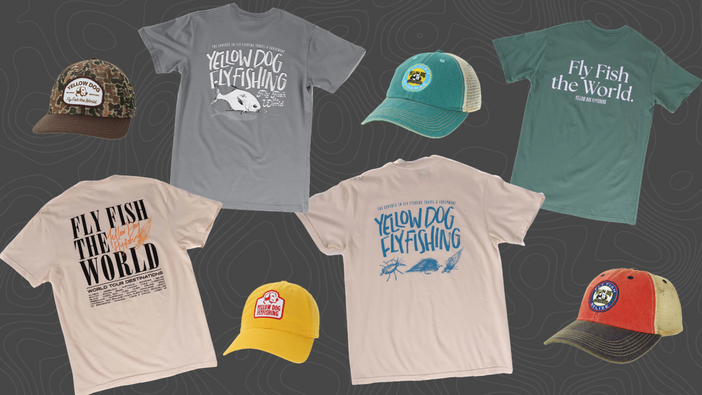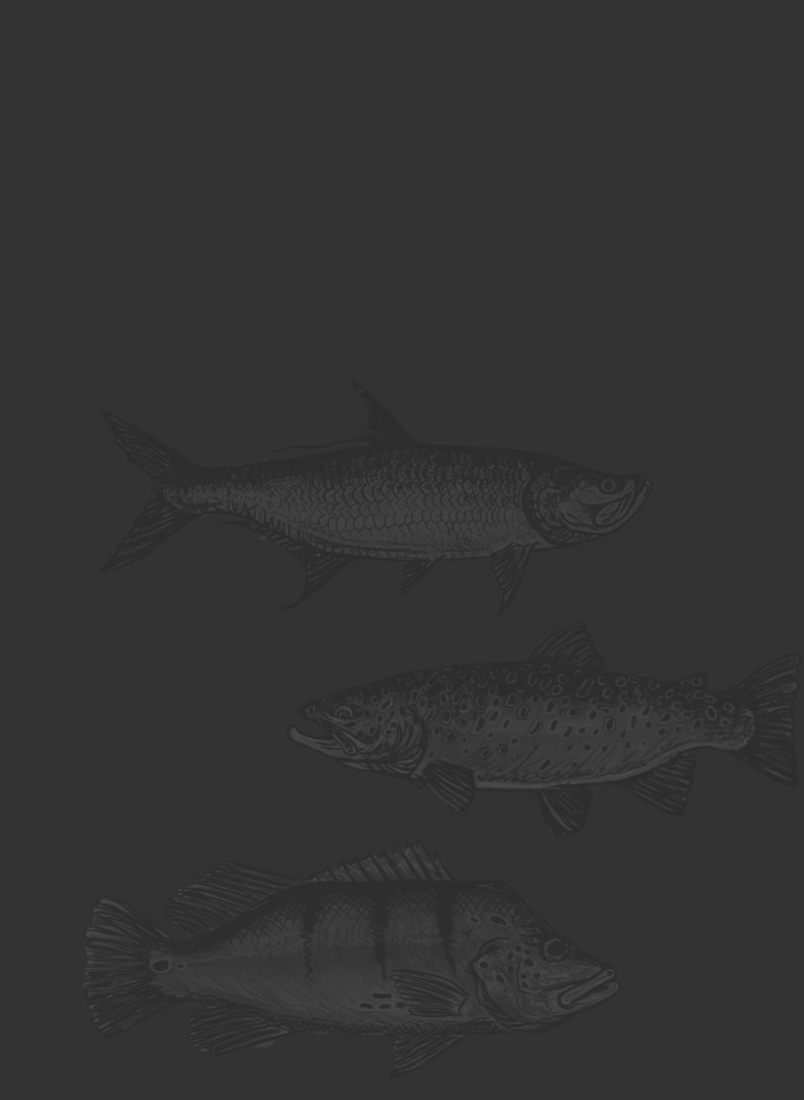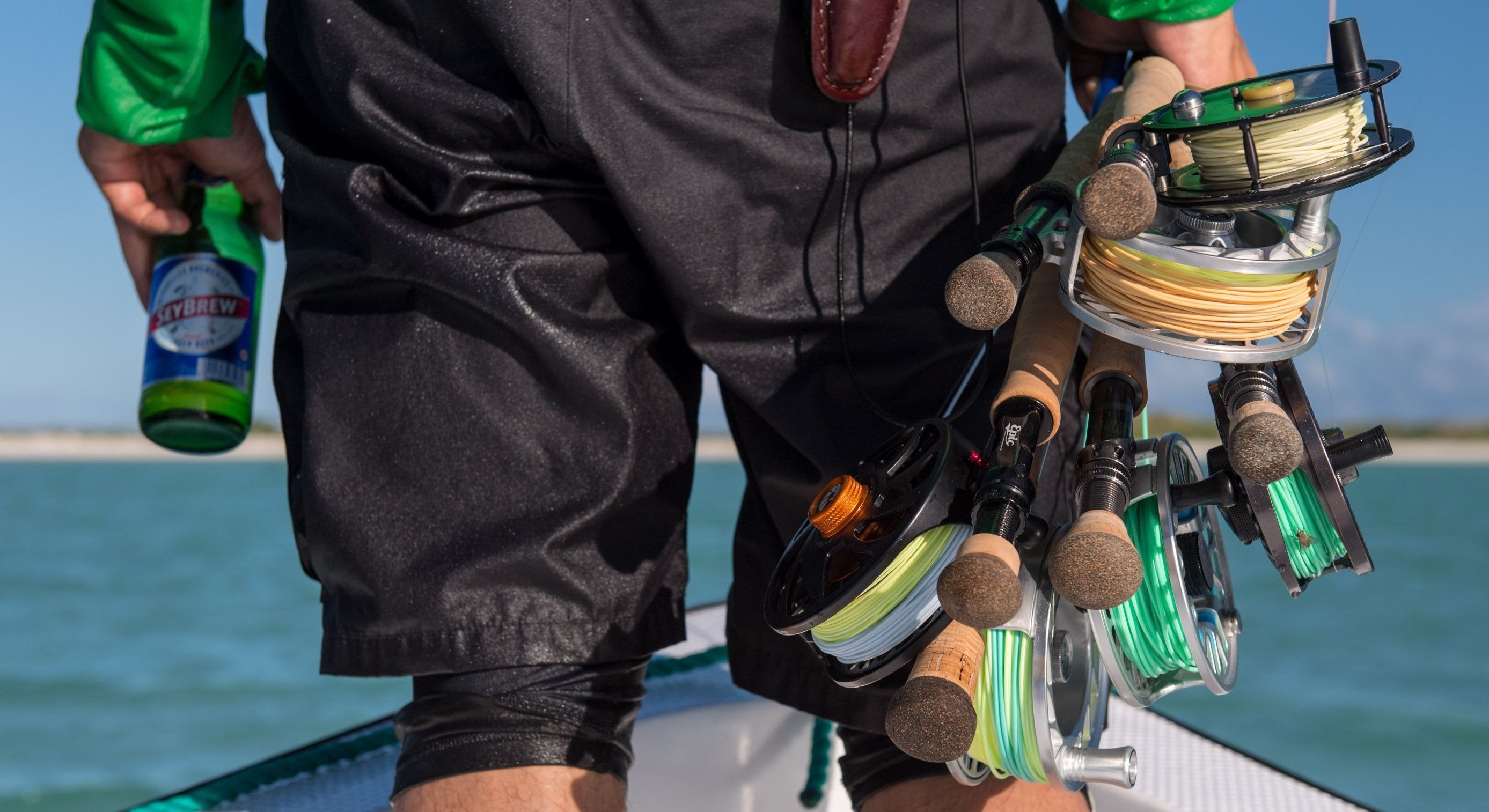For many anglers, it’s an addiction chasing tarpon on the flats and channels of Belize. Given that the fish can grow to over 200 pounds make it one of the most sought-after game fish on the planet. Tarpon will inhale the fly and won’t actually eat it.
For this reason, setting the hook may be the most difficult part - it will test every angler’s patience and skill, only to feed the addiction further. Spectacular aerial acrobatics and a challenging fight will surely ensue if hooked into one. It all equates to an incredible experience.

Tarpon is a saltwater fish but can even survive in freshwater or "brackish" water. The fish even have a primitive lung allowing them to breathe air. Often times anglers see tarpon “gulping” as they surface for air. They live a largely nomadic lifestyle covering huge swaths of the ocean in their annual migrations seeking food, certain water temperatures (around 78 degrees), and whatever else. Anglers can prepare for success with a little background on the tarpon diet, what time of year to fish, and what tackle and gear work best.
Tarpon Diet and Season
What Tarpon Eat – The fish eat crabs, worms, shrimp, as well as baitfish. With a bucket-style mouth, tarpon can suck in their prey. The adults will find their prey in the flats and channels, where the juveniles will mostly be feeding in the shelter of the mangroves.
When to Fish - Belize has year-round fishing – 12 months of chasing tarpon. However, that’s not to say that there aren’t better times than others if vying for a chance at a large migratory tarpon. The seasons are:
April – September: These are the true silver kings, 80 to more than 150 pounds. The rest of the year provides an opportunity for resident and juvenile tarpon.
Flies and Equipment
Tarpon Flies for Belize- Belize tarpon tend to prefer patterns such as:
- Campeche Crab - size 2/0
- Streaker – sizes 1/0 to 3/0
- Black Death - sizes 1/0 to 3/0
- Green Hornet - sizes 2/0 to 4/0
- Cockroach – sizes 1/0 to 3/0
- Tarpon Toad - size 1/0 to 3/0
Click here for other tarpon fly patterns we like to use in Belize.
Equipment
Due to the large size of the fish, it’s important to bring the correct equipment. For juvenile tarpon in the 10-40 pound range, a seven weight will be more than enough to wrangle these fish in a timely matter. If you're targeting tarpon in the 50-90 pound range, then a ten weight should work just fine. When you move into the 100+ pound category, an eleven or twelve-weight fly rod is needed. Everyone has their favorite fly rod brand, whether it's Sage, Thomas & Thomas, Scott, G. Loomis, etc... but here's a piece of industry "insider" information: it is very difficult to make in today's world a bad fly rod. Don't get too hung up on which fly rod you should choose, but spend more time focusing on casting practice. If you're pursuing migratory tarpon on the fly, choose a fly rod that has fast action and isn't too brittle because you're going to be doing a lot of pulling!
Unless you like to tie your own tarpon leaders, we suggest buying pre-tied leaders, especially if you're not confident in your knots! Ten-foot leaders with a 20lb class tippet and 80-pound shock are more than enough to get the job done on the migratory tarpon in Belize. Bringing both a floating line and an intermediate line is recommended.

Where to Find Tarpon in Belize
Flats – This is more traditional sight fishing. You and a guide will most likely be in a boat searching for cruising fish. In this case, floating lines are preferred. Intercepting patrolling tarpon and quickly stripping is the strategy here. The bottom of the flats could be light-colored sand or turtle grass and matching fly color to bottom color is important.
Channels and River Mouths – More blind casting is used in these areas. You’re better off with intermediate lines that sink quicker. The large channels in the reefs are prime locations for tarpon feeding on smaller fish. Likewise, tarpon will be feeding at the mouths of rivers in hopes of a meal. In the early morning or late evening, anglers can target rolling tarpon in channels or in the rivers. Tarpon roll in the early morning and late evening, when oxygen levels in the water are low and expel the oxygen from the air through their air bladder.

Generally speaking, the larger tarpon can be found in the northern part of Belize in places such as:
Once the fish is located, the real battle starts.
Setting, Fighting, and Landing a Tarpon:
Setting the Hook - Tarpon has a mouth like concrete. It's important to have a sharp and strong hook like the Gamakatsu SL12S. In addition, the guide will want you to really set the hook hard!
Try to break the tarpon’s spirit early in the fight by playing it hard. Don't worry about fighting the fish during the first initial run yet. Ensure that you clear the fly line and get the fish on the reel.

In theory, if that line’s tight and you’re applying pressure, the tarpon will effectively reset the hook time and time again, embedding it deeper into the soft part of the mouth with each subsequent jump. If you’ve made it past the first few minutes, then there a few techniques to keep in mind during the fight.
Fighting a Tarpon - “Bow to the king,” is a saying thrown around among tarpon anglers. This is meant to encourage the angler to point the rod tip to the fish – literally, bow down or reach your rod tip outwards. This ensures that there’s slack in the line when the tarpon jumps, and it doesn’t land on a taut leader, possibly breaking it.
Rod tip down – Hold the rod against or near your lower abdomen with the tip pointed straight at the fish. This applies more pounds of pressure on the fish when it’s in the water, as opposed to a rod held 90 degrees to the water.

Use angles to your advantage – When the fish runs – with the rod tip down, even to the point where it’s in the water – point your rod in the opposite direction. The Angle will substantially increase the pressure put on the fish.
There’s no reason not to land a tarpon quickly with these techniques.
Landing Tarpon - The key to landing a tarpon is to do it quickly with minimal stress to the fish. Tarpon as large as 200 pounds have been landed in a half-hour or less. The quicker you land a tarpon and put the heat on it early, the less stress is put on the fish with a long fight.

It’s encouraged that the angler is situated in the water with the fish if a picture is wanted. Either take a picture over the side of the boat with the fish still in the water - or the best technique, get in the water to take the picture. This puts less stress on the fish and reduces mortality rates.
For more information on Belize lodges, trips, how-to articles, and more visit our Belize fly fishing page as well as our Belize Recommended Gear Guide.
Relevant Articles:





























